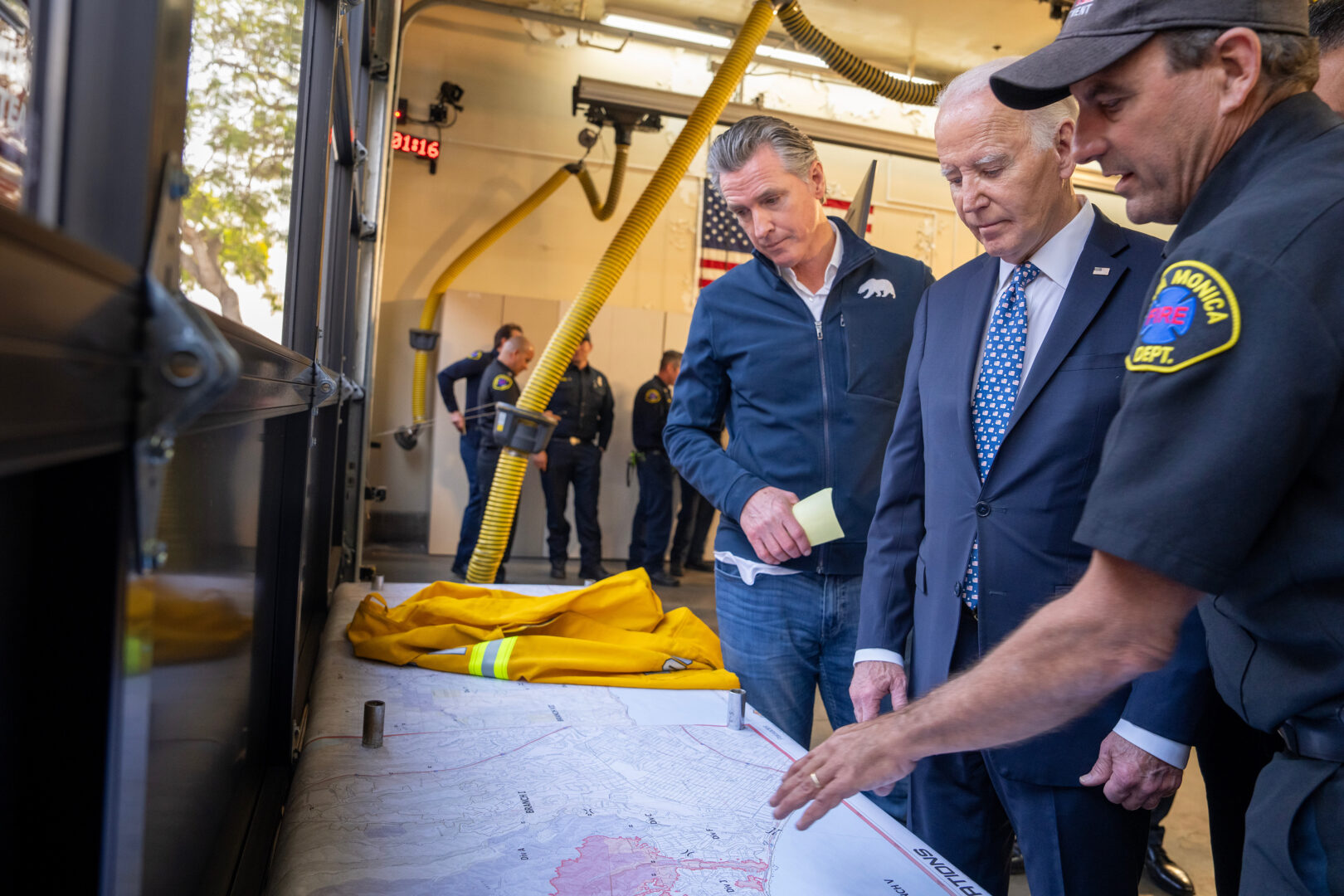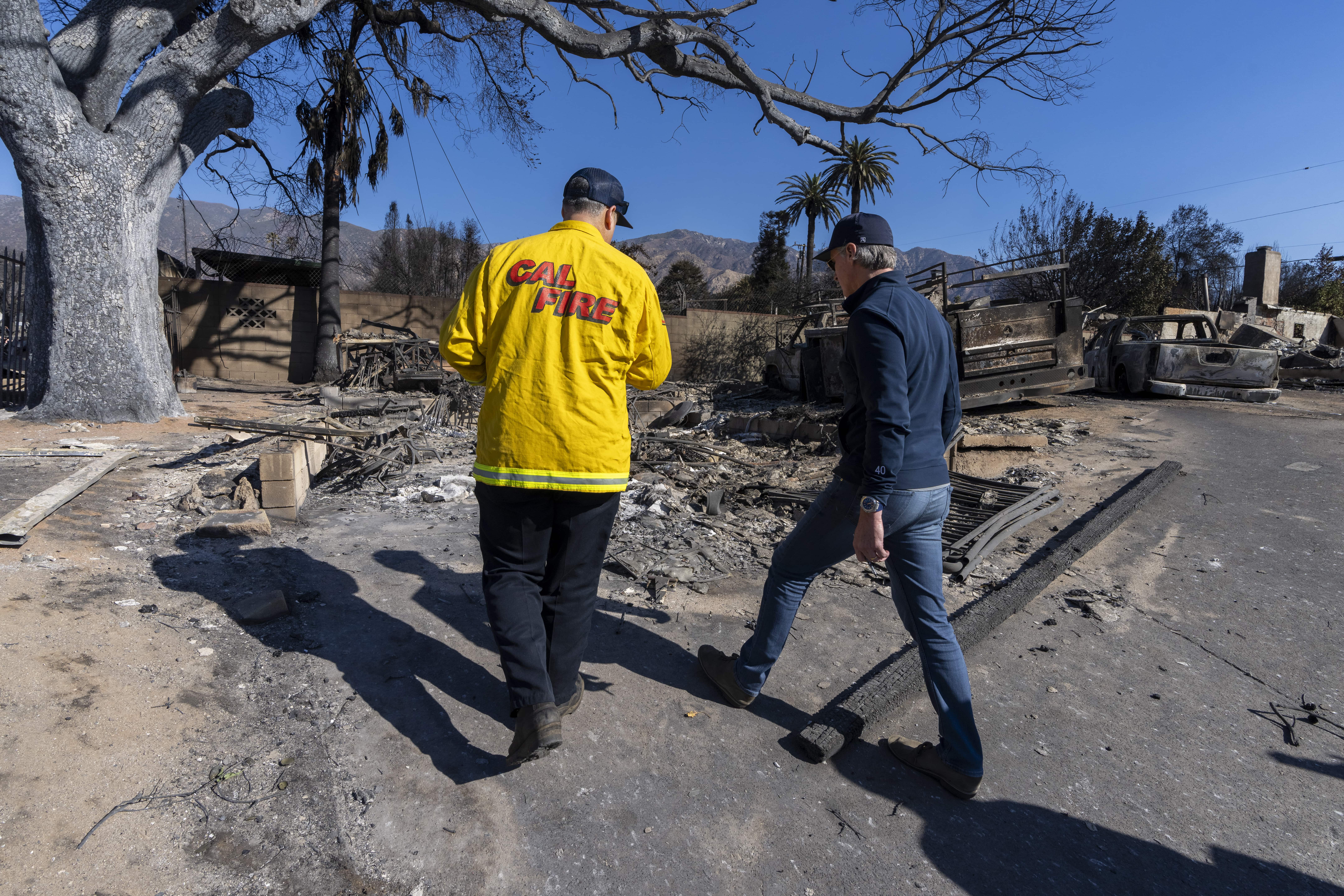Here’s all the actions Governor Newsom has taken in response to the Los Angeles fires
Deployed unprecedented firefighting and first responder force – including early pre-positioning before the fire

- Governor Newsom ordered pre-positioned firefighting personnel and assets on Monday, January 6 – ahead of the severe fire weather that started on Tuesday, January 7. Pre-positioned assets included 110 engines and hundreds of firefighters in strategic locations throughout Southern California, including in Los Angeles. California also pre-positioned assets – including over 300 additional firefighting personnel and 135 additional engines – once again on January 12 in anticipation of a second round of severe fire weather.
- Governor Newsom has deployed 16,000+ personnel, including firefighters, California National Guard service members, highway patrol officers and transportation teams. These efforts are supported by the biggest state investment in fire response in history — nearly doubled since the beginning of the administration. Response efforts include more than 2,000 pieces of firefighting equipment, including 1,490+ engines, 80+ aircraft, 200+ dozers and 210+ water tenders to aid in putting out the fires. The Governor deployed a surge of California Highway Patrol Special Response Teams to provide ongoing law enforcement capacity to further protect fire damaged communities in Los Angeles.
- Governor Newsom ordered the activation of more than 2,500 California National Guard service members to augment firefighting operations and support local law enforcement to protect communities from looting. The Governor’s National Guard activation started with his emergency proclamation on Tuesday, January 7 with over 600 service members deployed. The Governor doubled the number of those deployed on January 11, and increased that by 1,000 the next day to a total of 2,500.
- Governor Newsom proclaimed a state of emergency on the first day of the fire, Tuesday, January 7, to support communities responding to the fires. He subsequently issued two executive orders to support response and recovery efforts.
Partnering with the federal government to boost California’s rapid response

- At the Governor’s request, President Biden approved a Presidential Major Disaster Declaration to support ongoing response efforts. The Major Disaster Declaration has been expanded to support communities with repairs or replacement of firestorm-damaged public facilities and infrastructure.
- In a cell phone call from the firestorm, Governor Newsom requested from President Biden additional federal assistance to cover 100% of California’s fire management and debris removal costs for 180 days, up from the traditional 75%.
- Within the span of 12 hours, the Governor secured three Fire Management Assistance Grants (FMAGs) to help ensure the availability of vital resources to assist firefighting efforts on the Palisades, Eaton and Hurst fires.
Launching historic recovery and rebuilding efforts — faster than ever before

- Providing tax relief to those impacted by the fires. California postponed the individual tax filing deadline to October 15 for Los Angeles County taxpayers. Additionally, the state extended the January 31, 2025, sales and use tax filing deadline for Los Angeles County taxpayers until April 30 — providing critical tax relief for businesses. Governor Newsom suspended penalties and interest on late property tax payments for a year, effectively extending the state property tax deadline.
- Rebuilding Los Angeles faster and stronger. Governor Newsom issued an executive order to streamline the rebuilding of homes and businesses destroyed — suspending permitting and review requirements under the California Environmental Quality Act (CEQA) and the California Coastal Act.
- Fast-tracking temporary housing and protecting tenants. To help provide necessary shelter for those immediately impacted by the firestorms, the Governor issued an executive order to make it easier to streamline construction of accessory dwelling units, allow for more temporary trailers and other housing, and suspend fees for mobile home parks. Governor Newsom also issued an executive order that prohibits landlords in Los Angeles County from evicting tenants for sharing their rental with survivors displaced by the Los Angeles-area firestorms.
- Mobilizing debris removal and cleanup. With an eye toward recovery, the Governor directed fast action on debris removal work and mitigating the potential for mudslides and flooding in areas burned. He also signed an executive order to allow expert federal hazmat crews to start cleaning up properties as a key step in getting people back to their properties safely.
- Safeguarding survivors from price gouging. Governor Newsom expanded restrictions to protect survivors from illegal price hikes on rent, hotel and motel costs, and building materials or construction. Report violations to the Office of the Attorney General here.
- Directing immediate state relief. The Governor is proposing California provide at least $2.5 billion in additional funding for ongoing emergency response efforts and to jumpstart recovery efforts for Los Angeles.
- Getting kids back in the classroom. Governor Newsom signed an executive order to quickly assist displaced students in the Los Angeles area and bolster schools affected by the firestorms.
- Protecting victims from real estate speculators. The Governor issued an executive order to protect firestorm victims from predatory land speculators making aggressive and unsolicited cash offers to purchase their property.
